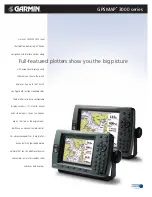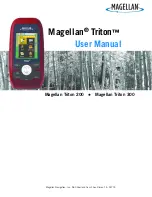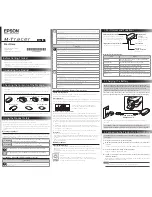
Troubleshooting
Condition
The polar axis shaft has play.
The reticle pattern isn't visible
(not very clear).
Starts appear blurry.
Image is out of focus.
This isn't a problem because a slight amount
play is needed for the gears to operate.
Be sure to check the clamps before shooting.
The view field isn't properly adjusted.
Turn the polar finder (focus adjustment) to
adjust the view field.
The focus ring has moved.
Secure the focus ring with tape beforehand.
One of the clamps is loose.
Cause
Remedial action
The reticle illuminator is too dark (bright).
Adjust the brightness (VOL: reticle
illuminator intensity control).
Check the polar scope before and after
shooting.
The polar alignment is off.
If a telephoto lens is used, pay attention to
the front-rear balance.
If the altitude is low, use guided shooting.
The lens is deflected.
Confirm after shooting that the Skymemo
RS is operating.
This is a negative effect of atmospheric
refraction.
If the temperature is low, keep the
batteries at the proper temperature.
The Skymemo RS stopped operating due
to the drop in battery voltage.
Check before shooting whether contact
would occur after exposure.
The arm moves by 15° per hour.
The camera or lens has contacted the
fixing part.
In the case of IF focusing, a significant
change in Skymemo RS position may bring
the image out of focus.
Adjust the focus with the Skymemo RS
positioned close to the shooting position.
In conditions of high temperature or
humidity, or when the Brownie size is
used, the film will float/move.
Shorten the exposure time.
Try using a different film.
9
Operation
Northern or Southern Hemisphere (switchable)
Approx. 3 kg – tracker plus camera arm
240mm x 90mm x 130 mm
Approx. 2.5kg at each end
Total 5kg
1/4 tripod screws (conforming to the JIS standard)
Stepper
6VDC (C-cells x 4pcs.)
2X or stopped
FIXED STAR, SUN or MOON
1:500, 1:2, Worm: 1:144
>24 hours (manganese batteries @ 20 degrees C in internal test)
Weight
Dimensions - LxWxH
Load capacity
Camera mount
Gears
Polar scope
Motor type
Tracking mode
Hand controller
Power source
Battery life
Specifications
Magnification: 4X
Actual field of view: 10 degrees
Reticle illuminator and reticle pattern
Accuracy: better than 5’
Filter thread: M30.5 P:0.5



























